Clark’s Columbia River Maps
by Joseph A. Mussulman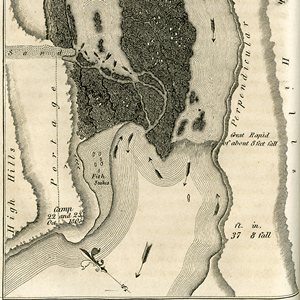
Clark made a series of maps illustrating the Columbia River suitable for future navigators.

Clark made a series of maps illustrating the Columbia River suitable for future navigators.
Odocoileus hemionus columbianus
by Joseph A. Mussulman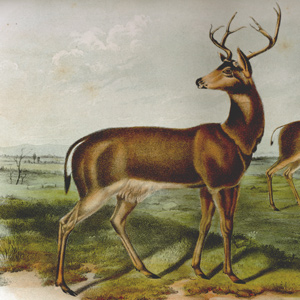
Lewis’s conviction that the “black tailed fallow deer of the coast” and the “common fallow deer” were two distinct species was sufficient to urge later investigators to try to clarify them.
Running out of candles
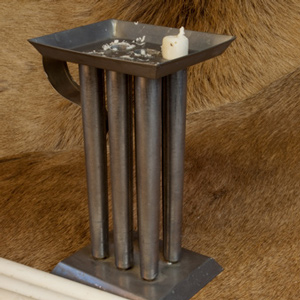
Fort Clatsop, Astoria, OR Elk tallow is rendered to make new candles, Lewis finds that the area’s elk do not have enough fat to make a sufficient supply, and President Jefferson writes to Lewis’s mother with news of the expedition’s progress.
Poor hunting
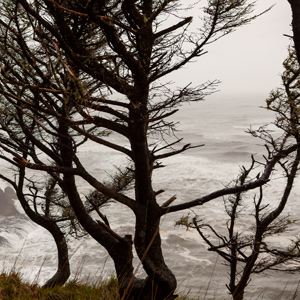
Tongue Point, Astoria, OR Clark complains that he has “not Seen one pacific day” since his arrival. Lewis’s group continues searching for a winter site with plenty of game. They find nothing but squirrels.
The astonishing Pacific Ocean
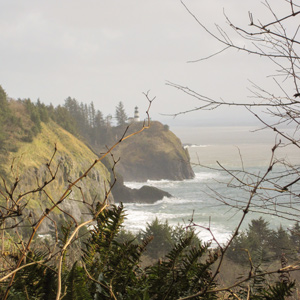
Station Camp near Chinook, WA Clark takes a group to view the Pacific Ocean. On the way, they collect a California condor specimen and mark their names on trees. The men behold “with estonishment the high waves dashing against the rocks & this emence ocian.”
A break in the weather

Station Camp near Chinook, WA A break in the weather enables the main party to dry gear and for Clark to make celestial observations. Lewis botanizes, hunters find some success, and Gass reflects on reaching the end of their voyage.
Moving to Station Camp

Station Camp near Chinook, WA The stormy weather finally breaks, and the main party paddles to Baker’s Bay, the end of their westward water journey. Camp is established near the Chinook’s Middle Village.
Lewis's hiatus
by Joseph A. Mussulman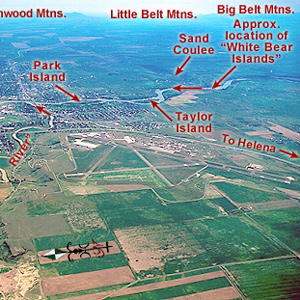
One can almost feel the thrill of wakening to a clear early-summer dawn at this powerful place on the pregnant plains where the Medicine meets the Missouri. Here began a five-day hiatus in Lewis’s master plan for his junket to find the boundary of British-held Canada.
And a return to Bald Mountain
by Joseph A. Mussulman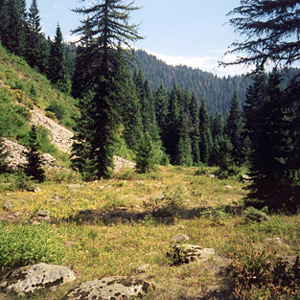
By the evening of 17 September 1805, their seventh sleep west of Travelers’ Rest, it was obvious to the captains that the Indians’ assurance that they could cross the mountains in six days was false, whereas the prediction that they would find no game there was all too true.
The need for five separate details
by Joseph A. Mussulman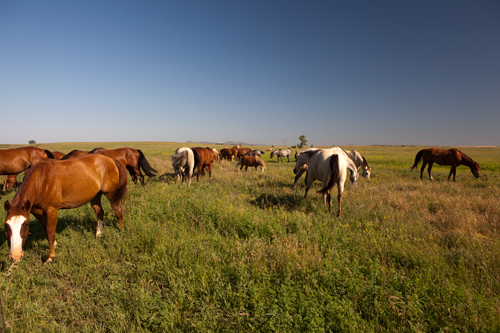
There was no Northwest Passage by water; and the portage they found took much longer than a day. The political repercussions from that alone could be immensely embarrassing to Jefferson. Something had to be done….
Excerpt from River of Promise
by David L. Nicandri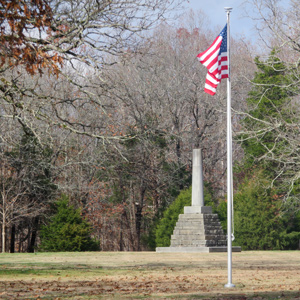
Lewis had made a habit of abandoning Clark in quests for exploratory triumph. It was no coincidence that Lewis was the first to see the Great Falls or the Continental Divide; he engineered those moments.
A role model for Lewis and Clark
by Arlen J. Large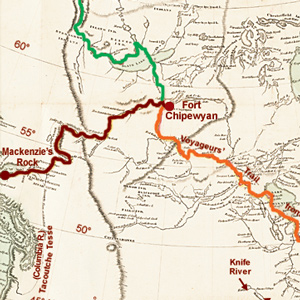
He was the first literate traveler to cross the North American continent north of Mexico, beating Meriwether Lewis and William Clark by nearly 12 years. The Lewis and Clark journals often echo Mackenzie’s journal.
Populus tremuloides
by Mark Behan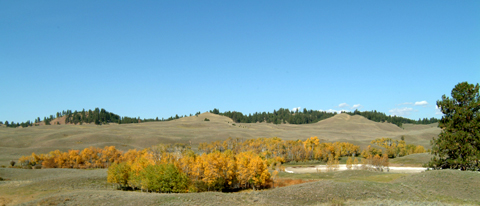
More than a year into the expedition, Lewis recognized a tree native to New England in the middle of Montana. The generic name, Populus is Latin for Aspen.
Bison in the journals
A synopsis of the Expedition’s encounters with the American Bison including 17 key journal entries and commentary.
Nature's grateful vegetable
by Jack Nisbet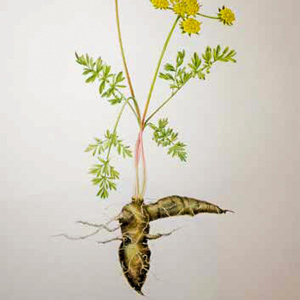
Columbia plateau biscuitroots: “one of the grateful vegetables” by naturalist Jack Nisbet. An Indian food source for thousands of years.
Populus sp.
by Joseph A. Mussulman, Mark Behan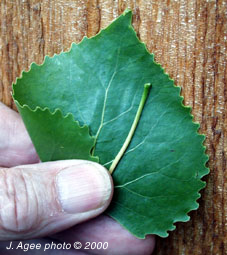
On the day before he reached the Great Falls of the Missouri, Meriwether Lewis wrote his own brief description of a species previously unknown to science: “The narrow leafed cottonwood grows here in common with the other species of the same tree with a broad leaf.”
Antelope, Antilocapra americana
by Joseph A. Mussulman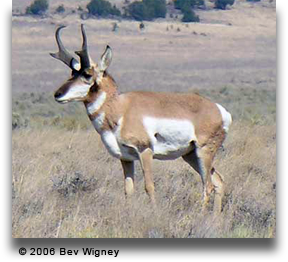
The men of the Corps of Discovery must have been electrified by their first sighting of the pronghorn antelope at the northeast corner of today’s state of Nebraska. Naturalists were eager to find the answers to some basic questions about them.
Measures of torment
by Joseph A. Mussulman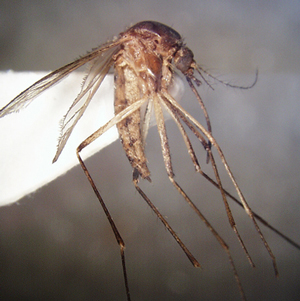
“Our trio of pests still invade and obstruct us on all occasions, these are the Musquetoes eye knats and prickley pears, equal to any three curses that ever poor Egypt laiboured under.”

Lewis and Clark were among several significant explorers of North America both before and after the expedition.